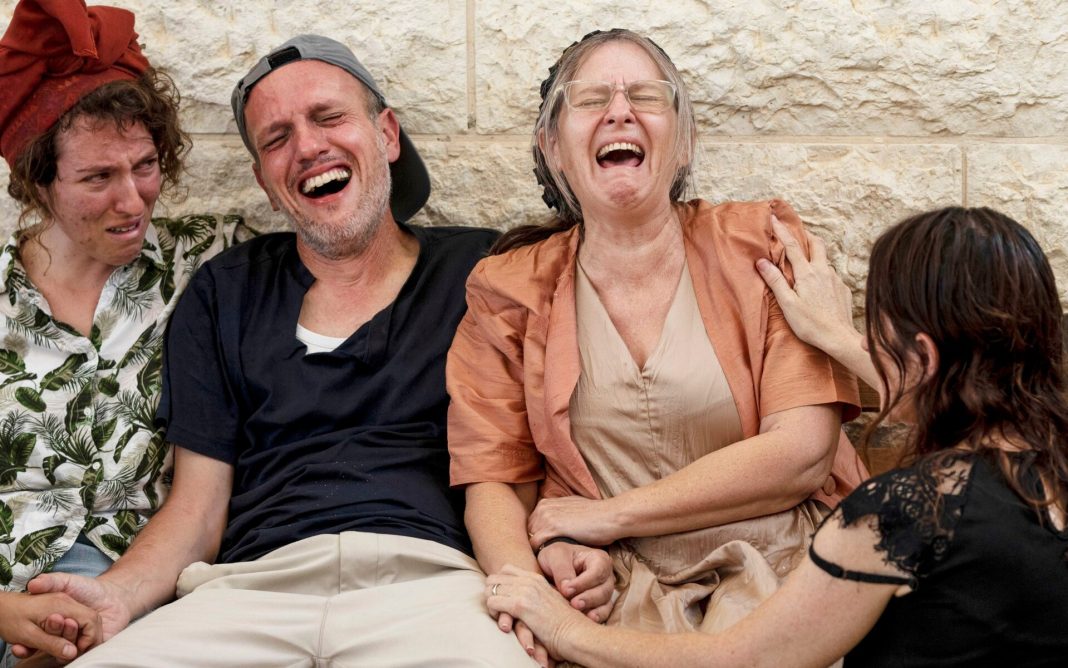Forty-two plaintiffs who attended the Supernova rave, near the besieged Gaza Strip, filed a civil suit for $56m at a Tel Aviv court against the Israeli military, police, defence ministry and the Shin Bet security service.
The festival was amongst several locations attacked by Palestinian fighters three months ago, in an assault that killed around 1,140 people, mostly civilians. Around 240 others were taken as captives to Gaza.
“Hamas murdered 364 partygoers, and kidnapped 40 to Gaza, some of whom were released, and some of whom are missing. Many were injured physically or mentally, including the plaintiffs,” the civil action read.
“A single phone call by IDF officials to the commander responsible for the party to disperse it immediately in view of the expected danger would have saved lives and prevented the physical and mental injuries of hundreds of partygoers, including the plaintiffs,” the lawsuit continued.
“The negligence and the gross oversight is beyond belief.”
The suit included claims of loss of current and future earnings, pain and suffering and medical expenses.
It cited reports which claimed that senior Israeli officials expressed concern over the party, and some even opposed it being held.
“On the night between 6 October and 7 October, at least two IDF assessments were held due to unusual incidents on the Gaza Strip border, one near midnight and another assessment close to 3am, several hours before the Hamas attack,” the lawsuit noted.
It added that plaintiffs were shocked that despite fears amongst security officials that Palestinian fighters could carry out an attack, there was no order to disperse the event.
In addition, the lawsuit added that the Israeli military’s security for the event was inadequate, due to the Simchat Torah religious holiday. Only 27 police officers were stationed at the party, it said.
“The event was held a small distance from the Strip’s border. The noise from the party was heard by Gazan residents and revellers were an easy target for the terror attack,” stated attorney Shimon Buchbut, a retired air force commander citied in the lawsuit.
Last month, the New York Times reported that Israeli officials obtained Hamas’s battle plan for the 7 October attack more than a year before it happened, but dismissed it as too ambitious.
Officials had acquired a 40-page document that Israel named “Jericho Wall”, which laid out the attack plans in precise detail.
The plan did not set a date for the attack, but did include “details about the location and size of Israeli military forces, communication hubs and other sensitive information”.
It detailed the use of rocket attacks to distract Israeli soldiers, drones to disable security measures, and overrunning the Israeli military base in Re’im kibbutz, near where the rave took place.
The report stated that an intelligence analyst in Israel’s Unit 8200 warned in July that Hamas had carried out a day-long training exercise similar to the plans outlined in Jericho Wall.
The analyst said it included a dry run of shooting down an Israeli aircraft and taking over a kibbutz and a military training base, and killing all its cadets.
A military official in Israel’s division responsible for containing threats from Gaza reportedly applauded the analysis but called it a “totally imaginative” scenario.
Nearly 22,000 Palestinians in Gaza – mostly women and children – have been killed by Israeli bombardment since the war began nearly three months ago.پ
Hamas says it carried out the attack in response to Israeli settlers’ violence and the repeated desecration of the al-Aqsa Mosque.
